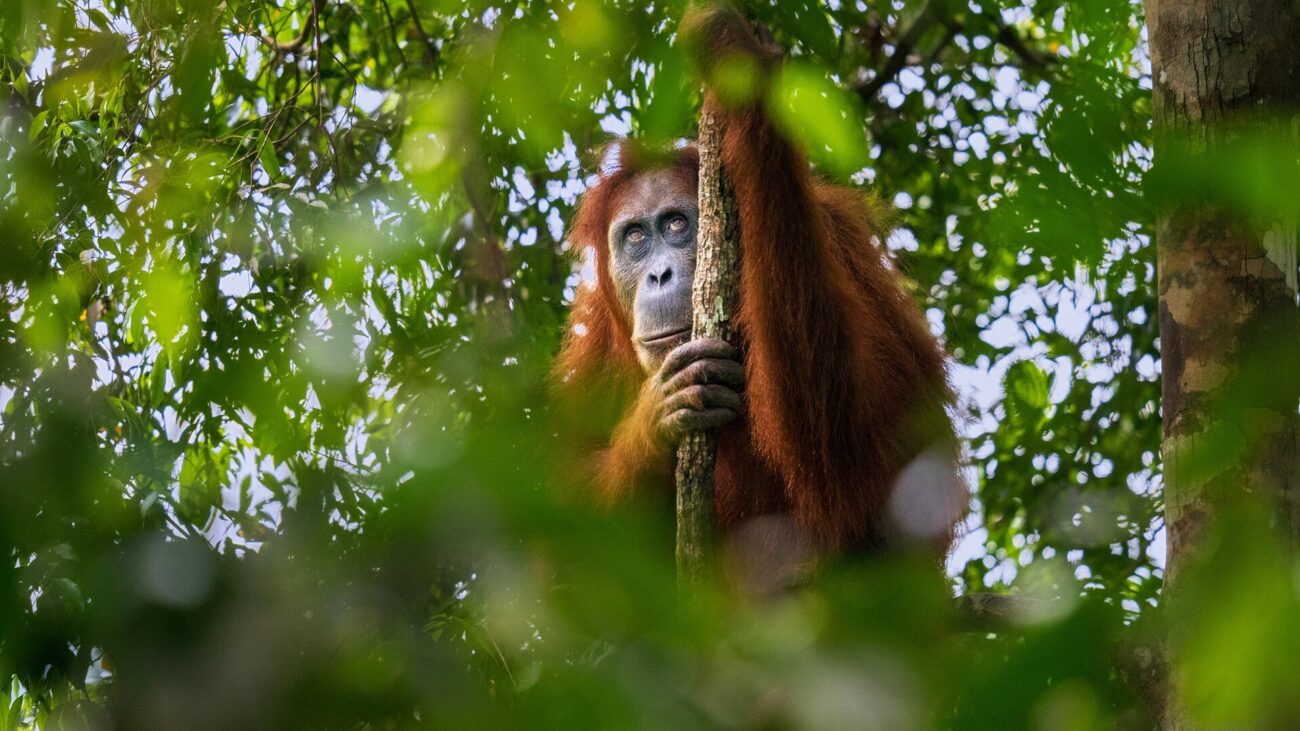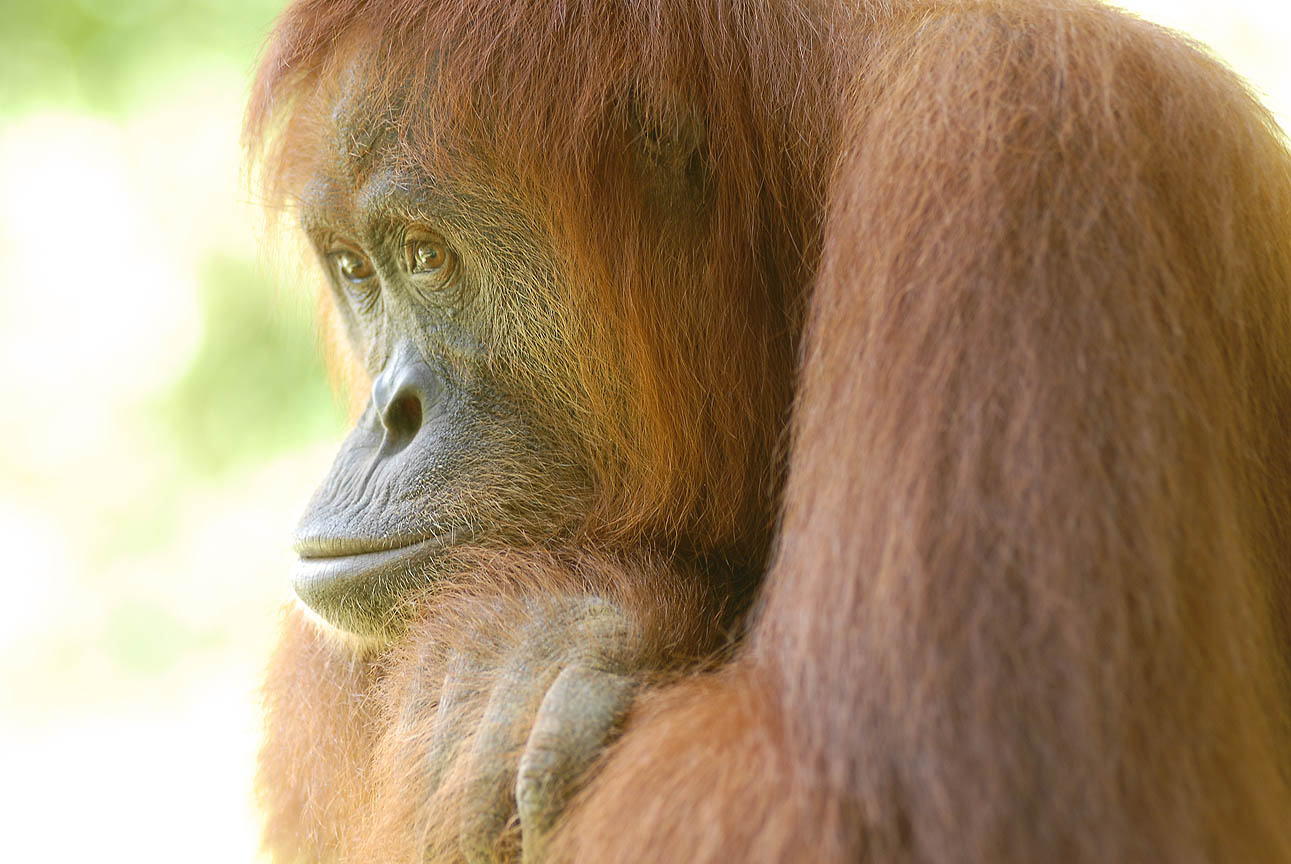
Photo credit: Zac Mills, the Wildlife Collective
This is a guest blog from SOS Ambassador Zac Mills, The Wildlife Collective.
Having spent countless hours following Sumatran orangutans with my camera, I’ve seen up close how these gentle, intelligent creatures struggle as the world around them changes. Their home is shrinking, the food they depend on is shifting, and their paths through the forest are increasingly blocked.
One of the most immediate impacts of climate change for orangutans is on what they eat. A 2025 study mapped 21 key plants in their diet, predicting how climate shifts—rainfall, temperature, and more—could affect their availability. The result? Food is becoming harder to find. Fruits ripen at different times, flowers bloom unpredictably, and the orangutans must expend more energy just to survive. That extra effort can leave them vulnerable to predators, to humans, and to the stress of scarcity.
Farms, roads and other human-made barriers carve the forest into fragments, leaving orangutans in isolated pockets. Small, separated groups can’t move easily to new areas when the climate changes. Their genetic diversity shrinks, and the risk of inbreeding rises. Smallholder farms and private plantations now crisscross what once was uninterrupted canopy, exposing orangutans to dangers they never faced before. Connectivity matters—without it, their ability to feed, migrate, and reproduce is hampered.

An aerial shot of degraded land and oil palm. Credit: PETAI
Climate change and human activity have fueled forest fires that devastate orangutan habitats. In 2023, researchers saw firsthand how smoke disrupted orangutans’ behavior in Borneo, altering even their calls. Fires kill, but survivors face scorched forests, depleted food, and damaged lungs. Fragmented landscapes make these fires even more deadly, leaving small populations trapped and vulnerable, caught between heat, smoke, and hunger.
Orangutans don’t face these challenges alone—the choices humans make amplify or mitigate their struggles. Illegal logging, plantations, and hunting all intersect with climate pressures, creating a complex web of threats. Yet local communities can be powerful allies. In areas where villagers are engaged in forest stewardship, orangutans have a better chance of finding safe passage, plentiful food, and thriving populations. Understanding and supporting these human-nature relationships is critical; conservation isn’t just about protecting trees, it’s about nurturing the people who share the forest and depend on it, too.

Conservation isn’t just about planting trees—it’s about restoring the intricate structure of the forest so that orangutans can move, forage, and thrive as they once did. Habitat corridors reconnect fragmented landscapes, allowing populations to mix and maintain genetic diversity. Anti-poaching patrols, community-driven forest management, and education programs give both humans and wildlife a stake in the future of these forests. Yet even with these interventions, if we fail to address the root causes of forest loss, our efforts remain reactive rather than preventative.
There is hope. From my work alongside the Sumatran Orangutan Society (SOS), I’ve seen what’s possible when science and local knowledge come together. SOS and their conservation partners are on the front lines—protecting the last patches of forest and restoring degraded habitats. One of their most effective approaches is creating habitat corridors that reconnect fragmented forests, giving orangutans the space to move, find food, and thrive.
What inspires me most is how they work hand-in-hand with local communities—supporting indigenous land rights, education, sustainable livelihoods, and forest stewardship—because true conservation only works when people are part of the solution.
Watching SOS combine restoration with community-led protection has shown me that protecting orangutans isn’t just about saving a species—it’s about sustaining the heartbeat of our planet. Every tree replanted, every orangutan born in the wild, and every community empowered brings us closer to a world where humans and wildlife can thrive together.
You can help protect Sumatra's Orangutans. Click to get updates
